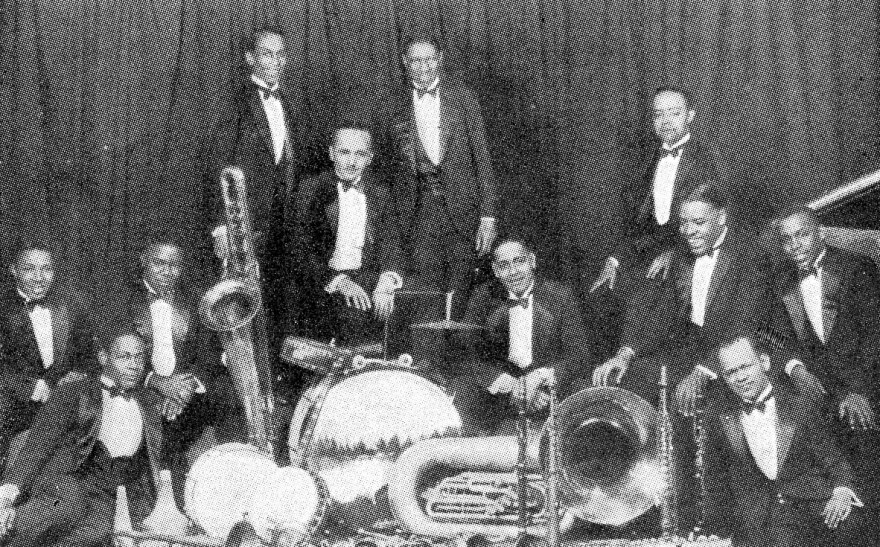Listen to the story above or read the script below:
Jazz is a music that mirrors the U.S. in the 20th century, a melting pot of cultures with waves of immigrants landing on our shores. Your ancestors from France and Spain, Great Britain and Ireland, the Caribbean and the Americas all brought their musical traditions and instruments which entered into the lexicon of early American music.
The most important part of the mix that tipped the scales in the creation of jazz came from a new people with a singular and virtually unheard music and rhythms. Black America brought Africa to the continent with music going back to the first instrument, the drum.
In New Orleans, Louisiana, it all got mixed together and seasoned to perfection. Jazz is a byproduct of the singular cultural environment found in the unique city. Founded in 1718, far from the Northeast’s original 13 colonies where British planters demanded their slaves take up Protestant Christianity.
Two powerful Catholic nations, France and Spain, had the early lead in the south by settling this fertile area by the mouth of the mighty Mississippi. The Catholics did not concern themselves with “African” aspects of slave life and culture. Unlike the Northern Colonies, African music, song and dance was permitted in NOLA where the city leaders allowed slaves to congregate on Sundays in a spot, outside the city limits, that was called ”Place des Negres” or Place Congo. For the first time in the U.S., Black Americans could publicly display music and dance from their African heritage in what is now known as Congo Square.
In 18th century New Orleans, whites, Blacks, a variety of Indigenous peoples, Creoles all lived and worked cheek to jowl. Layering the sound of the day were ragtime, waltzes, blues and folk music. Clarinets came with the import of Klezmer music. Various church styles with preachers like gospel blues player and evangelist Blind Willie Johnson exhorted the hell out of you in song. Imagine that cacophony of new sounds heard rolling out of your neighbors windows. World War I was about to make new rules for war. And Americans were creating a new music which would come to be called jazz.
The first renowned player in this musical evolution was native NOLA coronet player Buddy Bolden. Regarded as a key figure in the development of jazz, he infused his playing with ragtime, blues and church music. By 1895, he was known as the coronet king of New Orleans, leading six or seven different bands simultaneously. It is said that he brought a looser, raw and loud approach to instrumental music. Waltzes couldn’t hold a candle to the clarion call of Buddy’s cornet. He also introduced the concept of improvisation, crucial to the identity of this new approach to music.
And all of this happened before recording technology or the electricity it would need.
We will never know who played the first jazz note, but we do know the first jazz ever issued on record. In 1917, The Original Dixieland Jass Band copied the style of black musicians. The five white guys who made up the band borrowed to the point of plagiarism and had a million seller in “Livery Stable Blues”. This first hit record was also the first of a long practice of stealing the intellectual property of Black Americans.
The early New Orleans music is now known as traditional, or "trad jazz." Ironically Dixieland jazz more often refers to a revival of the trad sound and style in the 1920s and 30s. Trad is a baby picture of jazz, a seed leaf that tells you the plant, but not the flowers. Like the origin story, born out of a unique city that cradled this cauldron, a-boil with possibilities. That melting pot produced this Democratic Republic and the soundtrack of a new way of thinking which we now call jazz.
KNKX Celebrates Jazz Appreciation Month
Throughout the month of April, we will be illustrating different styles of jazz through time that make up jazz history through storytelling and music. From the early 1900’s to 2022, we will journey from Dixieland to Modern Jazz styles, Big Band to Hip Hop.
Listen to installments each weekday at 9am and 7pm on 88.5 FM and KNKX.org. See all stories from the KNKX History of Jazz project.








